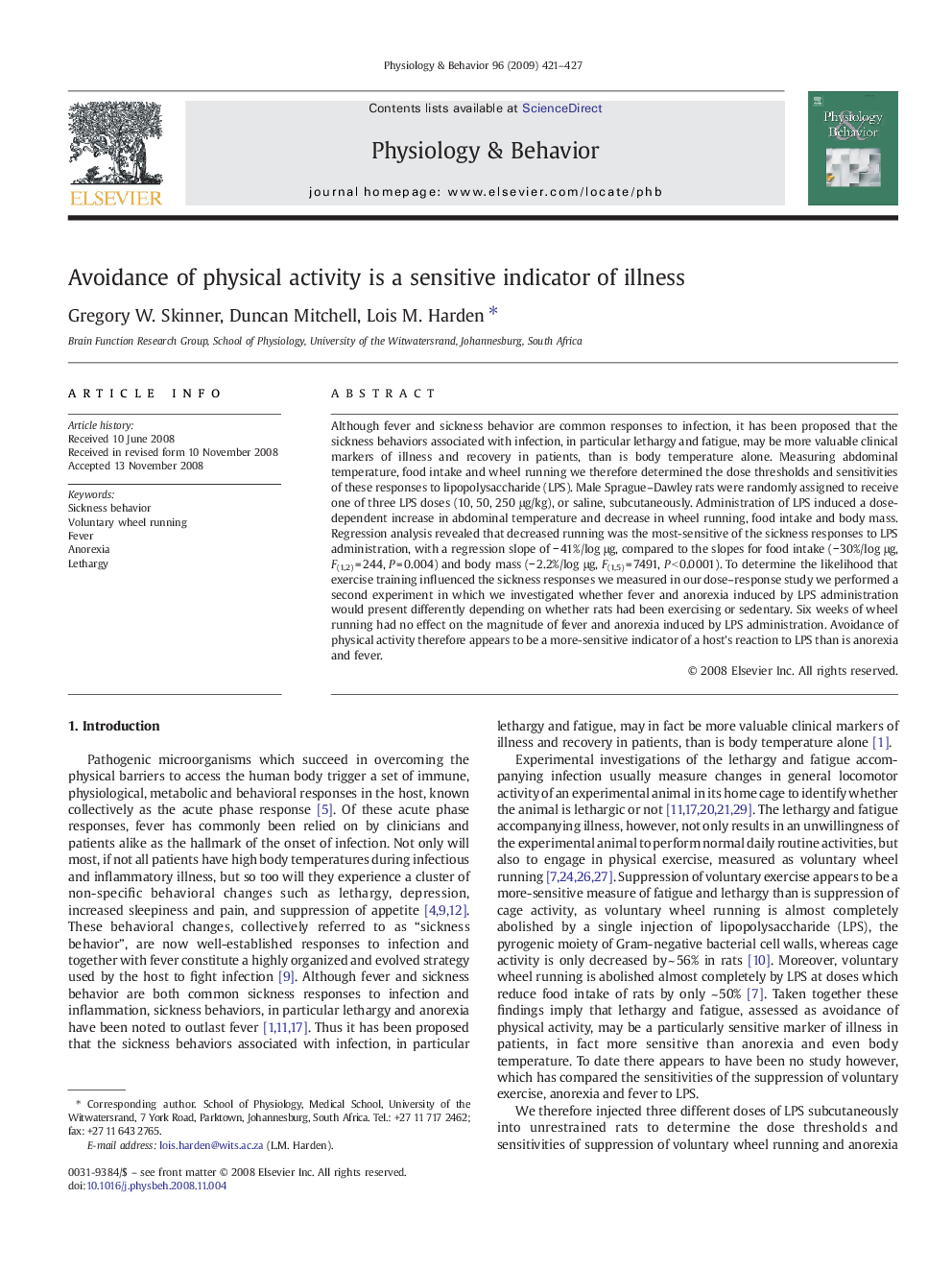| کد مقاله | کد نشریه | سال انتشار | مقاله انگلیسی | نسخه تمام متن |
|---|---|---|---|---|
| 2845714 | 1166397 | 2009 | 7 صفحه PDF | دانلود رایگان |

Although fever and sickness behavior are common responses to infection, it has been proposed that the sickness behaviors associated with infection, in particular lethargy and fatigue, may be more valuable clinical markers of illness and recovery in patients, than is body temperature alone. Measuring abdominal temperature, food intake and wheel running we therefore determined the dose thresholds and sensitivities of these responses to lipopolysaccharide (LPS). Male Sprague–Dawley rats were randomly assigned to receive one of three LPS doses (10, 50, 250 μg/kg), or saline, subcutaneously. Administration of LPS induced a dose-dependent increase in abdominal temperature and decrease in wheel running, food intake and body mass. Regression analysis revealed that decreased running was the most-sensitive of the sickness responses to LPS administration, with a regression slope of − 41%/log μg, compared to the slopes for food intake (− 30%/log μg, F(1,2) = 244, P = 0.004) and body mass (− 2.2%/log μg, F(1,5) = 7491, P < 0.0001). To determine the likelihood that exercise training influenced the sickness responses we measured in our dose–response study we performed a second experiment in which we investigated whether fever and anorexia induced by LPS administration would present differently depending on whether rats had been exercising or sedentary. Six weeks of wheel running had no effect on the magnitude of fever and anorexia induced by LPS administration. Avoidance of physical activity therefore appears to be a more-sensitive indicator of a host's reaction to LPS than is anorexia and fever.
Journal: Physiology & Behavior - Volume 96, Issue 3, 2 March 2009, Pages 421–427